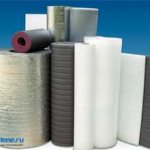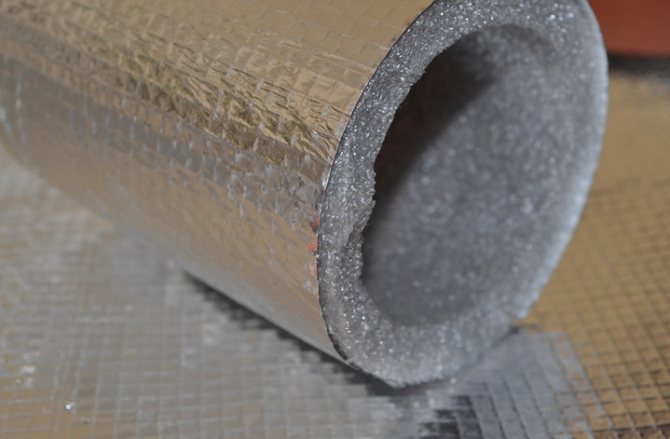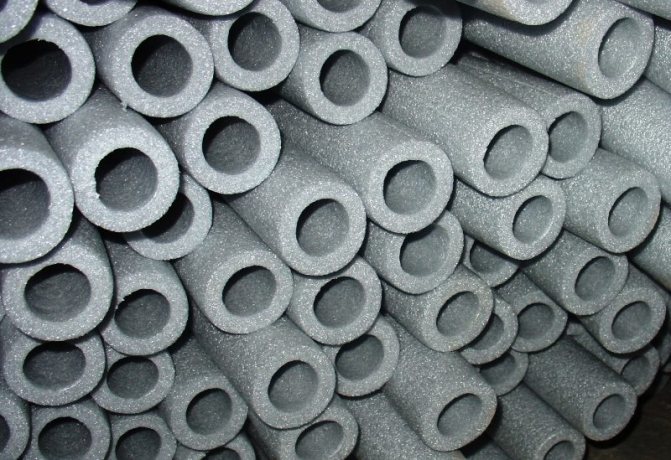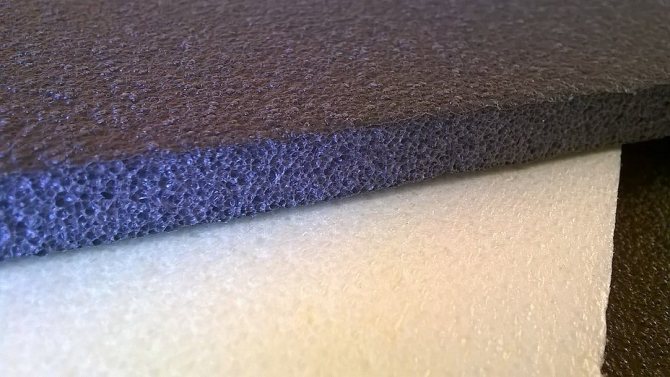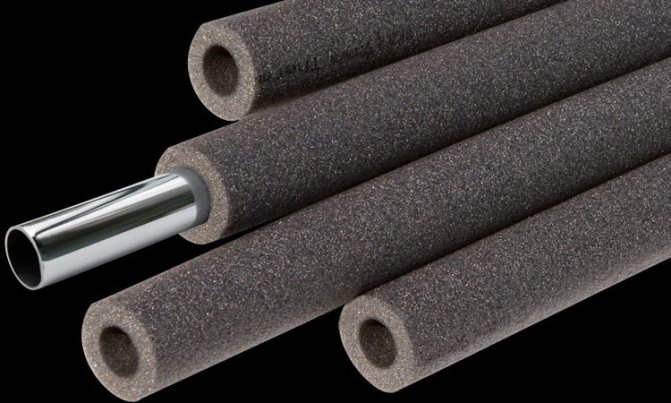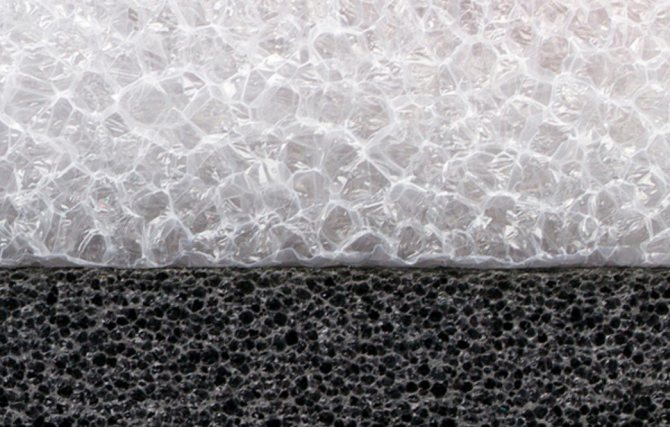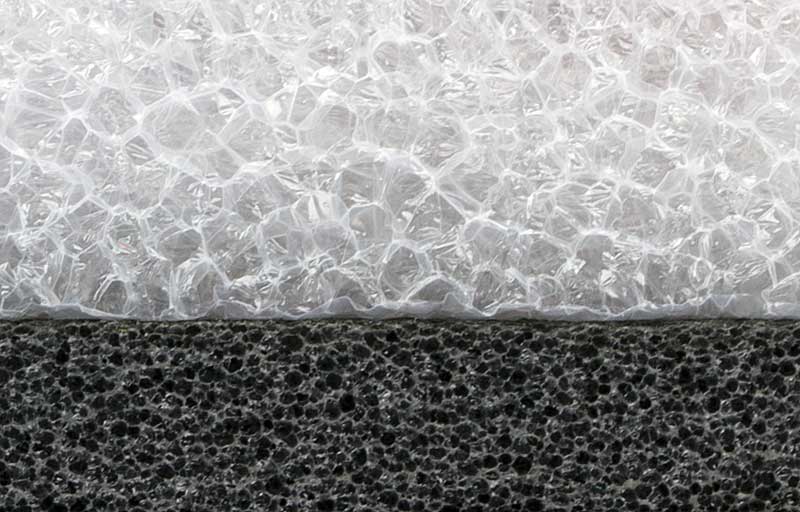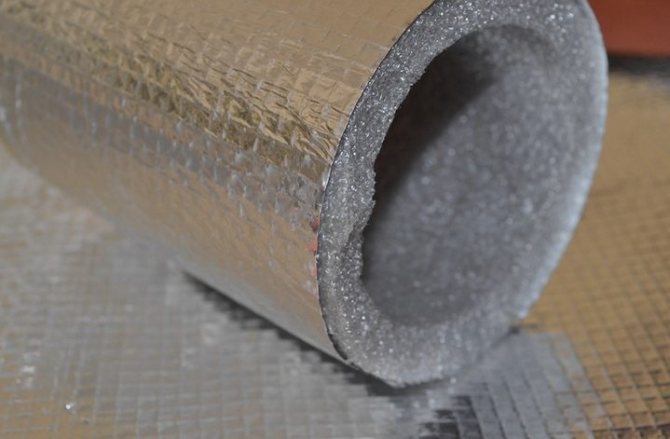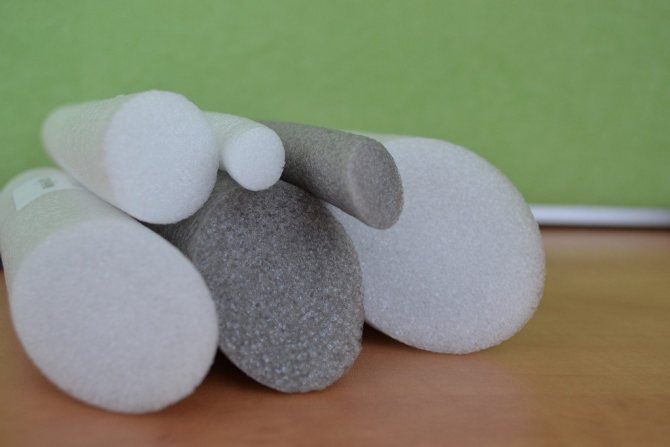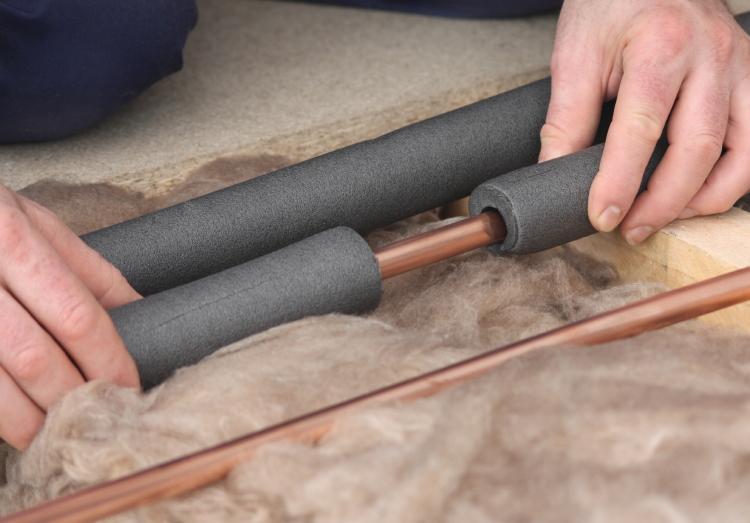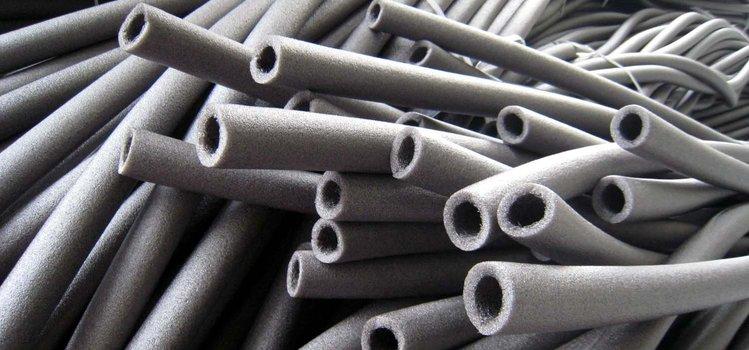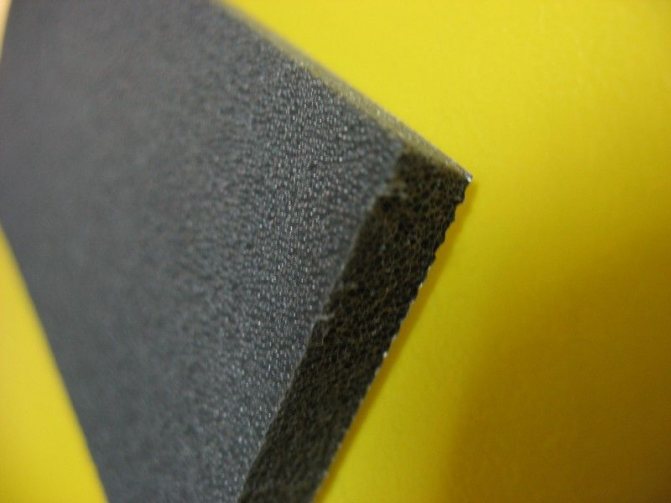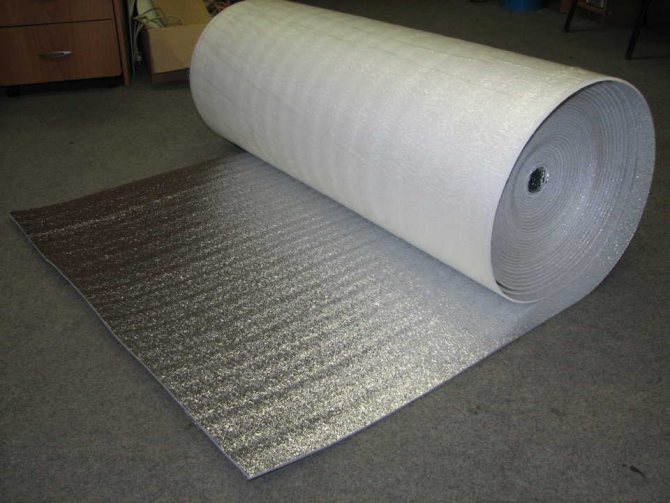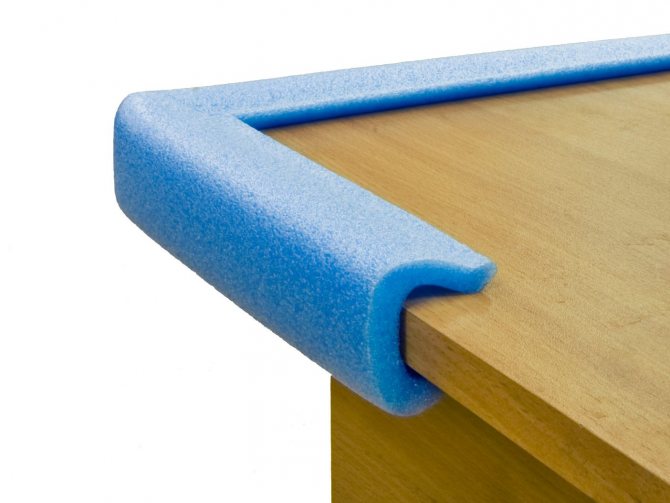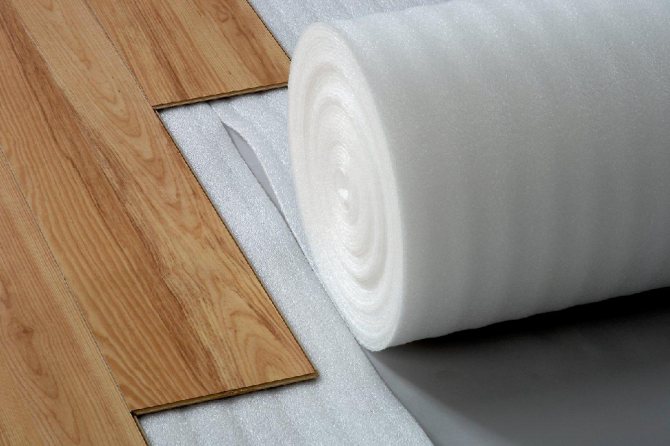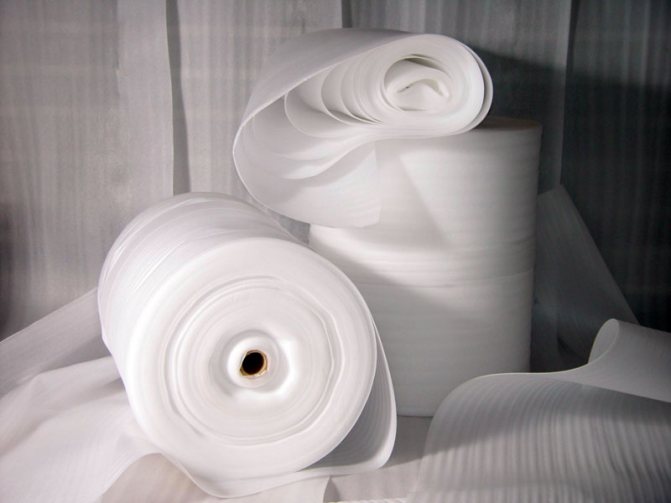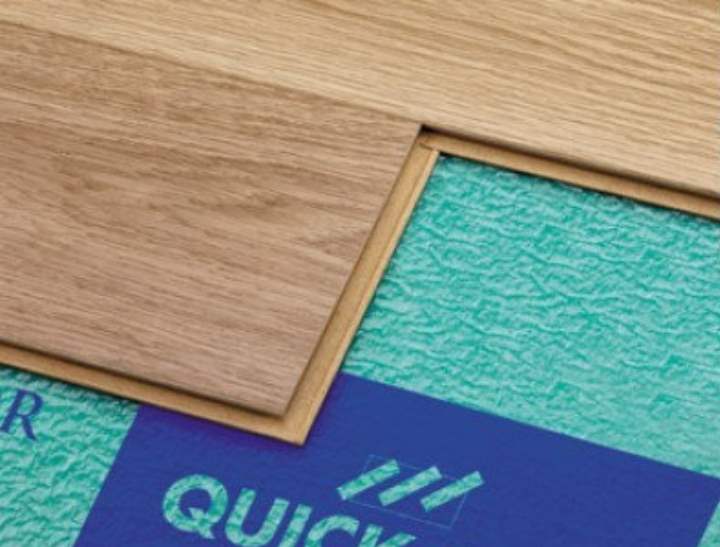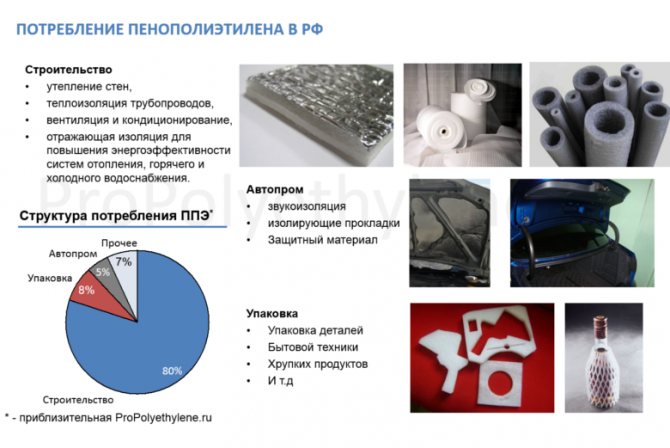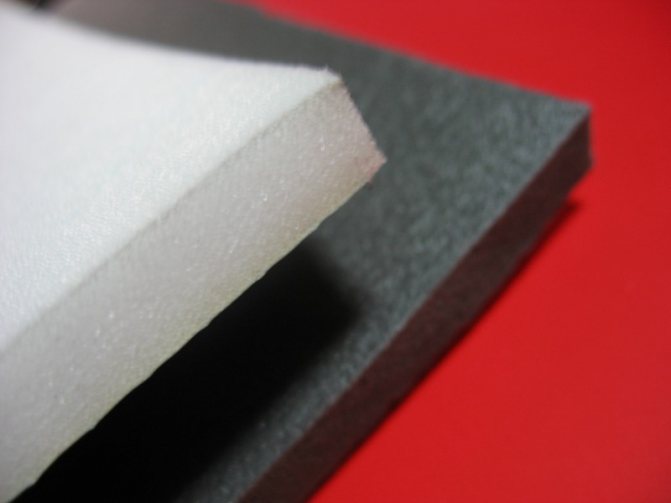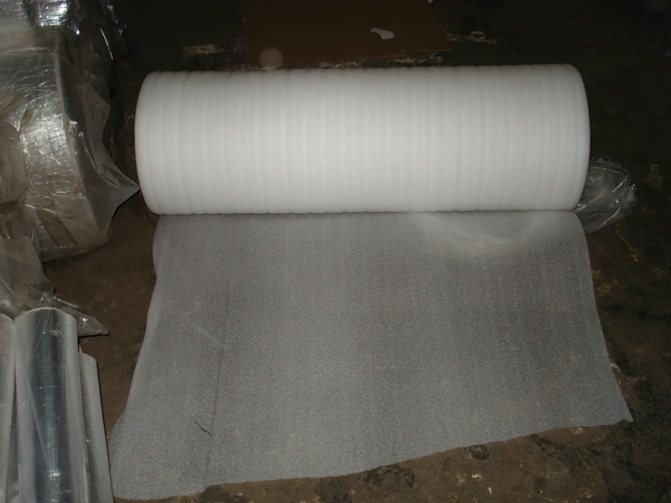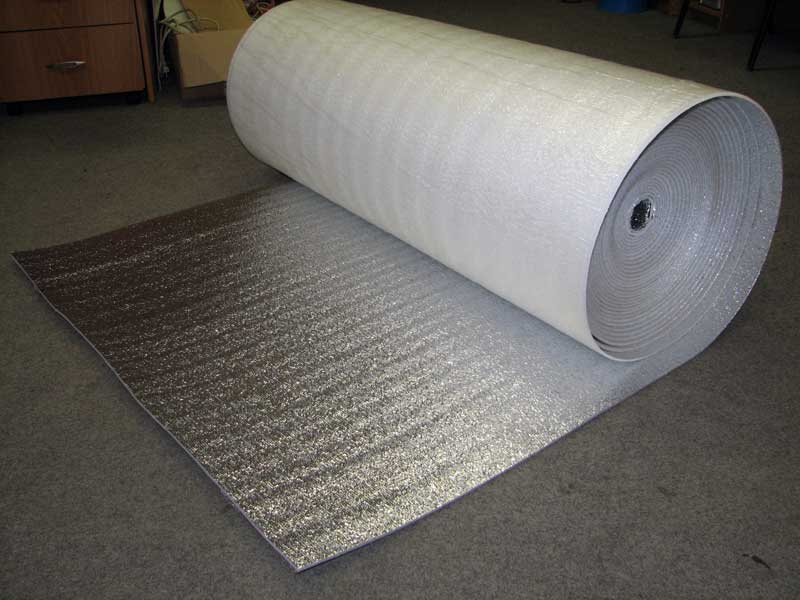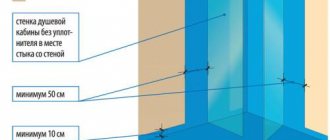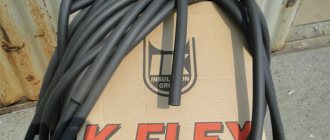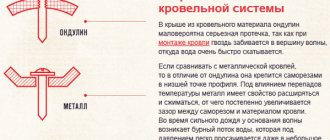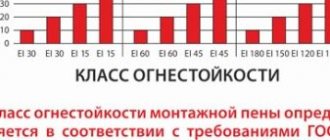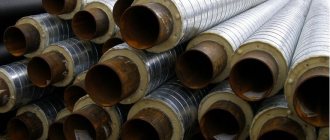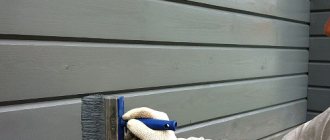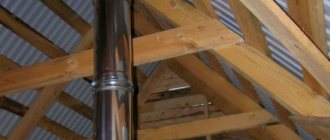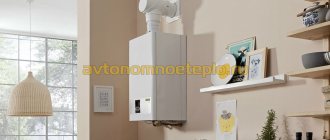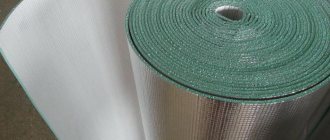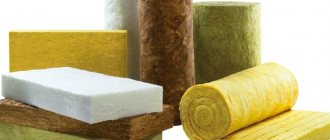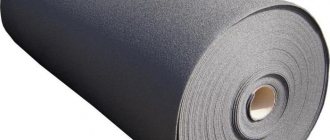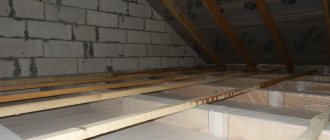Features of foamed polyethylene
The appearance of foamed polyethylene on the market of polymer products took place about 50 years ago. This gave impetus to the production of qualitatively new insulating materials and changed the view both on construction and on the manufacture of a wide range of products for various spheres of human activity.
Types by production method
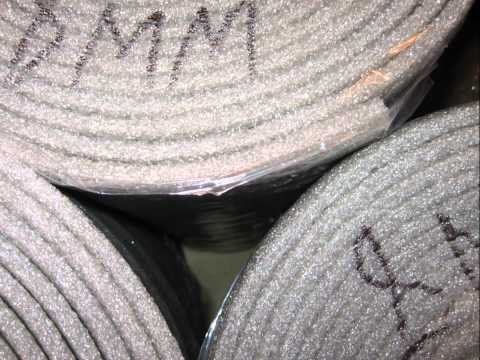
For simplicity of explanation, polyethylene foam is divided into "cross-linked" and "non-cross-linked" according to the production method, although the technologies used for each type may be different. The main difference between the obtained materials is that during production, the molecular structure of the "uncrosslinked" polyethylene foam does not change, in contrast to the "crosslinked" one, although both materials are called foamed.
Each of the obtained types of material has a number of distinctive features and, as a result, a slightly different field of application. The technology of "stitching" means the process of cross-linking of molecular units into a three-dimensional region with wide cells.
Recycling
For the disposal of waste foam polyethylene, the same technologies are used as for non-foamed - thermomechanical and thermochemical recycling, or pyrolysis.
Used packaging made of PSE is recycled into a secondary granule, and crumbs of cross-linked PPE serve as a filler for composite materials from which paving slabs and other artificial surfaces are made.
The main feature of gas-filled polymers - low density - makes adjustments to the technology. When processing waste PPE pressed in specialized machines - thermal compactors.
On the equipment market, you can find devices with a compression ratio of up to 90: 1. PPE briquetted in compactors can be loaded into an extruder or a thermal oven, used as a raw material for the production of polyethylene wax.
"Uncrosslinked" polyethylene foam (NPE)
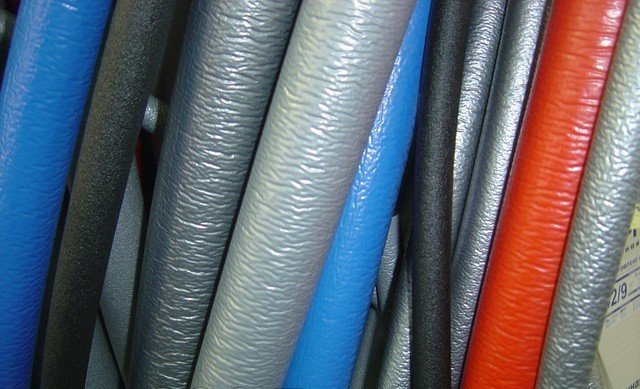

It is obtained using a physical blowing agent, by the extrusion method, or, more simply, by the method of foaming a polymer material with a gas mixture, which is subsequently replaced by ordinary air.
Its production is one of the most environmentally friendly due to the fact that the freon gas banned in all European countries and in most domestic environmental organizations has been successfully replaced with butane, propane-butane and isobutane. Although, in fairness, it must be said that it is freon, due to its high heat of vaporization, that is ideal for this production, but for the sake of health it has to be abandoned.
The result is a translucent, large-pore material. But its tensile strength is inferior to "cross-linked" polyethylene foam. This is due to the fact that there is no strong bond between polymer molecules. This indicator determines the area of application of the IPE.
"Cross-linked" polyethylene foam (PPE)
There are two types of this material, depending on the technology used:
- chemically "cross-linked";
- physically "stitched".
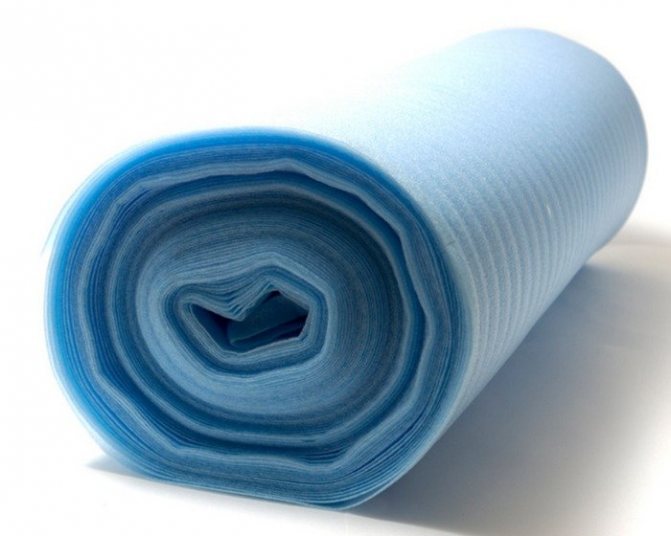

Both types are foamed in the oven, but the way of forming stable internal bonds at the molecular level is different.In the so-called chemical "crosslinking" a chemical reagent is used, and in the physical - a pulse-beam accelerator, which regulates the molecular structure of the material due to the flow of electrons.
As a result, in both cases, a material with rather small, closed cells is obtained, which is distinguished by excellent resistance to stress.
Material brands and manufacturers
In the modern market, insulation is represented by a wide variety of manufacturers. Among domestic brands as well as foreign companies, Thermaflex brand deserves the most attention, which includes tubes, rolls and heating cable. And also series with foil coating.
Every year the world industry produces about 200 thousand tons of foamed polyethylene. And although the market for these products began its active formation relatively recently, today its volumes exceed the rates of production of LDPE polyethylene. A further increase in demand for this thermal insulation is expected, and it is planned to be very successful in its use in completely unexpected areas and spheres of human activity. This can be electrical engineering, tourism equipment, and much more.
Comparative characteristics
| Main characteristics | "Cross-linked" polyethylene foam | "Wired" polyethylene foam |
| Thickness, mm | from 0.5 to 15 | from 0.5 to 20 |
| Density, kg / m3 | 33(± 5) | 25(± 5) |
| Working temperature, ° С | from -60 to +105 | from -60 to +75 |
| Thermal conductivity coefficient, W / (m • ° С) | 0.031 | 0.045-0.055 |
| Heat absorption coefficient, W / (m • ° С) | 0,34 | — |
| Water vapor permeability, mg / (m.h.Pa) | 0.001 — 0.0015 | 0.003 |
| Impact noise reduction index, dB, not less | 18 | — |
| Compressive strength at 25% linear deformation, MPa | 0,035 | |
| Water absorption by volume at full immersion 96 h,% | >1 |
A common disadvantage is that in the absence of extinguishing additives (flame retardants), they are flammable.
General positive characteristics:
- high moisture resistance;
- resistance to aggressive media - acids, oils, alkalis, etc .;
- excellent interaction with other materials;
- ease of installation;
- light weight;
- complete absence of a specific smell;
- resistance to microbiological effects;
- environmental safety and a small amount of waste in production.
However, the technologies for the production of "cross-linked" polyethylene foam are more complex, therefore it has a number of advantages over "non-cross-linked":
- it has almost 30% denser structure, which puts it in a much more advantageous position in matters of sound insulation;
- due to increased strength and higher resistance to UV radiation than NPE, it has a longer service life;
- its thermal conductivity is 20% lower than that of the NPE;
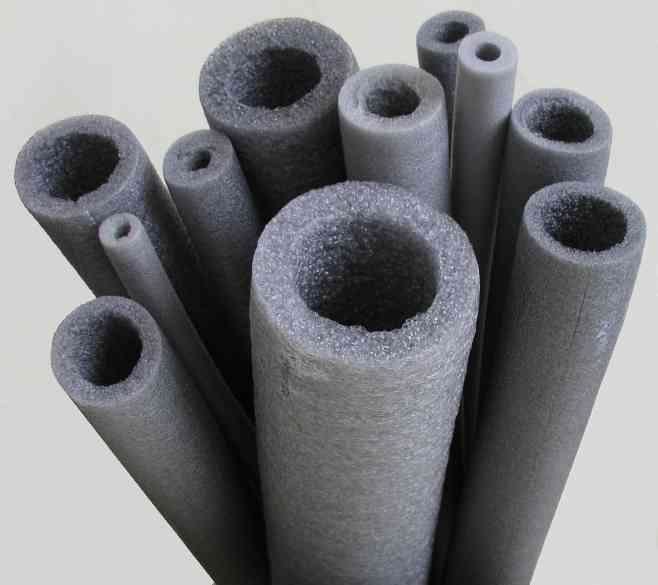

- higher microbiological resistance of the material;
- resistance to temperature and mechanical stress;
- insensitivity to organic solvents;
- vibration resistance;
- high deformation strength.
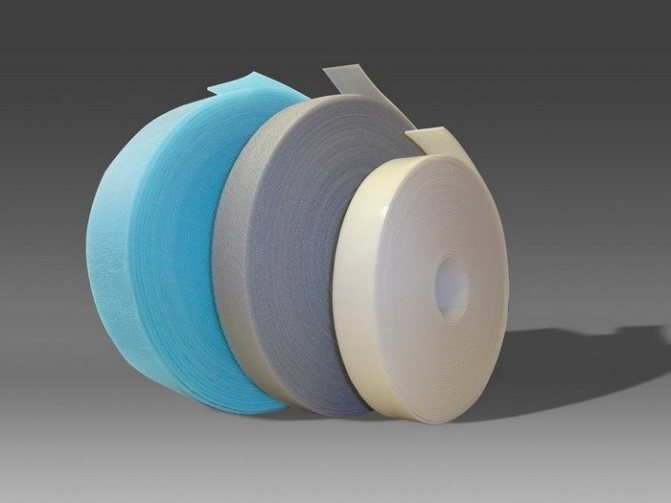

Nevertheless, NPE has an undeniable advantage - a low price, which often leads to a great temptation for sellers to artificially inflate its characteristics, passing it off as a full-fledged sound-proof material used in construction. It is worth noting that nowadays you can find a rather original application of polyethylene foam.
Due to the fact that the characteristics of the types of polyethylene foam sometimes differ very significantly, it would be more expedient to consider their areas of application separately.
Physiochemical properties
Here basic material properties:
- The lower operating temperature limit is -80 ° C. When going beyond it, the material loses its elasticity and becomes brittle.
- The melting point is about 110 ° C. Some manufacturers offer compositions with an upper limit of 140 ° C.
- Water absorption (in direct contact) does not exceed 1.2%.
- The tensile strength is 0.015 - 0.5 MPa.
- The material is resistant to most aggressive compounds, including refined products, and biologically active media.
- The service life reaches 100 years.
Data on thermal conductivity in comparison with other types of gas-filled polymers are given in the table:
| Material | Density, kg / m 3 | Thermal conductivity, W / m°TO |
| Polyethylene foam | 20 – 400 | 0, 029 – 0,05 |
| Expanded polypropylene | 20 – 200 | 0, 034 |
| Polyurethane foam | 60 – 600 | 0,02 – 0,04 |
| Foam rubber | 12 – 60 | 0,03 – 0,06 |
| Expanded polystyrene | 15 – 150 | 0,027 – 0,042 |
| Polyvinyl chloride foam | 15 – 700 | 0,035 – 0,045 |
Data taken from manufacturers' promotional offers.
Scope of "uncrosslinked" polyethylene foam (NPE)
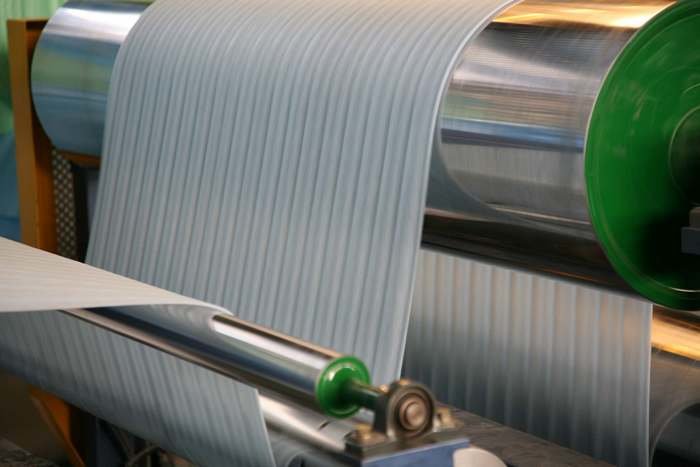

- This type cannot boast of a wide range of applications directly in construction. However, its properties make it absolutely indispensable in product packaging, which indicates the absence of toxicity.
- Despite the fact that, due to air-filled cells, the use of an IPE under a point load is fraught with ruptures, it is widely used for packaging any electronic equipment, glass products, packaging furniture, dishes, and so on.
- As a packing material, NPE is very convenient. It dampens even multiple shock loads well. Moreover, it does not deteriorate at all. This is the most valuable quality when transporting all kinds of items. It is used both as a cushioning material and as a wrapping material. It quickly replaced corrugated board and bubble wrap, accounting for 90% of the packaging market today.
- Another advantage is that due to its fine-bubble structure and softness, it is able to pick up some technical debris that settles on the surface of the material during loading and unloading operations, excluding the subsequent possibility of debris contact with the surface;
- NPE is even used as insulation against water, steam, condensate and structure-borne noise. But, it should be noted that this is only in those cases where there are no powerful bearing loads and high temperatures;
- Also, with low quality requirements, it is used in mechanical engineering and even construction as a heat-insulating material;
- It is used as reflective insulation to retain heat in the house and, as a result, reduce energy costs;
- It is used as a substrate for laminated parquet to level the surface;
- NPE is produced in different thicknesses (see table) and in different formats - in rolls, sheets, in the form of polyethylene foam mesh. There is also foil and laminated EPS. Therefore, there is a choice depending on the task at hand;
- Its low cost allows it to be used for the production of disposable products.
In the EU countries, the scope of its application is strictly limited only to packaging.
Features of the installation of foamed polyethylene
Penofol is more often used for thermal insulation of private houses - it is he who has a good thickness that provides protection from the cold. The insulation is laid with a foil layer towards the street, if the goal is to exclude the penetration of warm air from the outside, and towards the room, if it is necessary to insulate the house.
It is common to use polyethylene as a substrate for all types of flooring (warm, water-based, electric). If the operating conditions are not very harsh, the material will provide good thermal insulation and protection from noise and pests. You should not use polyethylene foam as an independent insulation for the floor, but together with others, it will fully justify itself. Sometimes the material serves as a backing for wallpaper or surfaces, which will later be processed with drywall.
Also, foamed polyethylene will be an excellent thermal insulation for:
- external or internal walls of buildings;
- basements, foundations;
- attics;
- flat and pitched roof;
- showers, saunas, baths.
Demand in other areas (automotive, manufacturing of freezers, lining of pipelines) is another reason to be convinced of the reliability of the insulation in question. The key rule during installation is the correct location of the foil layer.If the polyethylene foam insulation is correctly installed, there is no doubt about its durability and reliability.

